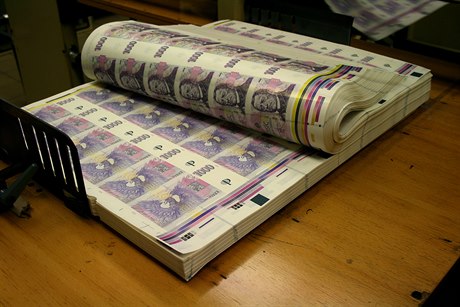On Tuesday, for the first time since January, the US dollar bought over 19 Czech crowns. Over the past month, the Czech crown has fallen almost 6% in value against the US dollar — the second-largest depreciation of all currencies after the Hungarian forint. And while the euro has lost over 2% to the dollar in the same period, the Czech crown has lost around 4% against the embattled common European currency.
It appears the weakening of the crown is a consequence of loss of investor confidence in the “new” economies of the CEE region: the Polish zloty has also fallen considerably against the dollar and euro over the past three months. What is more, on Tuesday the rating agency Moody’s lowered its outlook for the Polish banking sector to “negative” from “stable,” triggering a fall in Polish banking stocks of up to 4.7 percent.
Polish Central Bank governor Marek Belka called the move “baffling and surprising,” adding that the reason is “related to the situation of the banking system in Europe,” he told reporters in Warsaw.
While in recent days speculation has grown that Hungary may have to ask the IMF for another bailout, Moody’s in its comment accompanying the Polish banking rating downgrade said the Polish economy is more immune than its CEE neighbors to the turbulence in the eurozone.
Nevertheless, this should in principle not apply to the Czech banking sector, which unlike Hungary in particular has minimal exposure to foreign currency. On Tuesday, however, the European Bank for Reconstruction and Development (ERBD) warned of a possible liquidity crisis in the CEE region.
In the case of the Czech Republic, this danger stems from western European mother banks siphoning the capital from daughter Czech retail banks. According to the business daily E15, the Czech banks Česká Spoříitelna (owned by Erste Bank) and ČSOB (owned by KBC), as well as local units of UniCredit (Italy) and Raiffeisenbank (Austria) are now all undercapitalized, thus further withdrawal of dividends from the country, reduced lending with a potential lending dry-up can be expected.
In its weekly currency report published Tuesday, Raiffeisen points out that foreign investors are not differentiating between the economies of the CEE region — as was the case during the financial crisis in 2008–2009.
“Investors do not seem to be drawing any fundamental distinctions between the various CE countries,” analyst Wolfgang Ernst said in the report, adding that as a result the Austrian bank has “no alternative” other than revising downwards its forecast for the crown /euro exchange rate. “The period of the crown’s weakness should drag on into the second half of 2012.”




